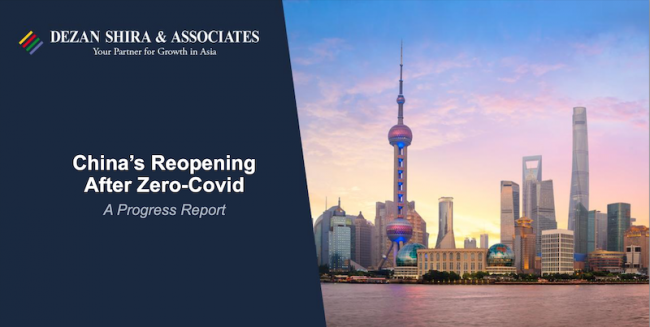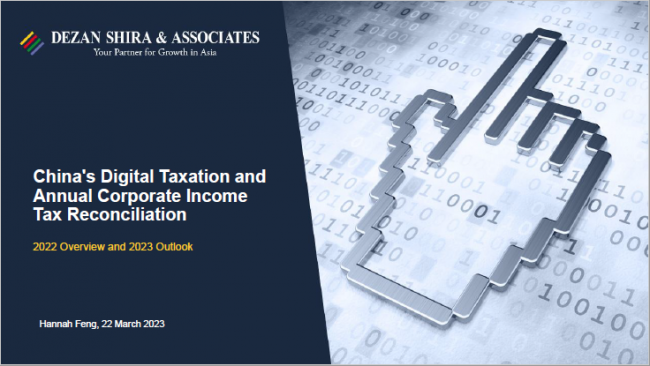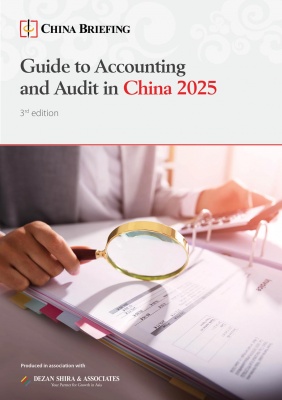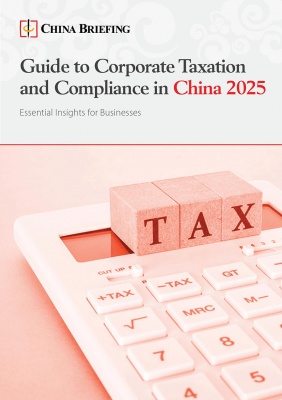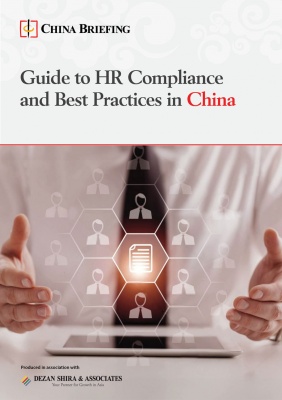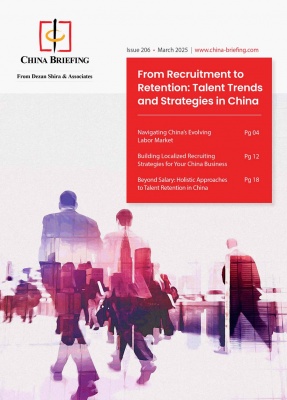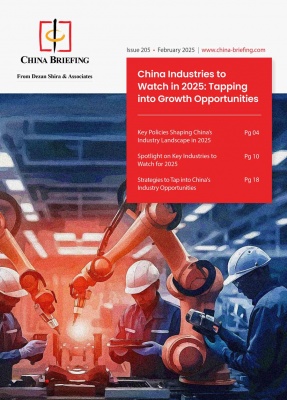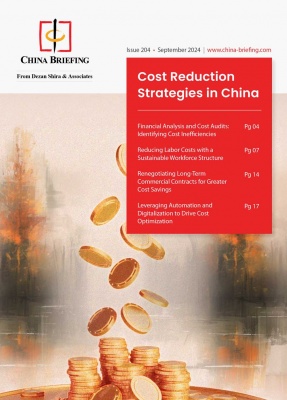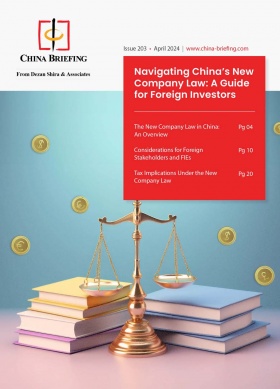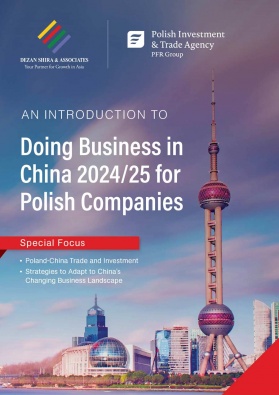China-Indonesia Closer Economic Ties: Trade and Investment Opportunities
- Since the resumption of diplomatic relations in 1990, China and Indonesia have seen comprehensive development in bilateral economic and trade cooperation. In recent years, this cooperation has accelerated, particularly in trade, investment, and engineering projects.
- Investment has become the most significant highlight of China-Indonesia cooperation. Chinese enterprises have invested in a wide range of sectors in Indonesia, including agriculture, mining, electricity, real estate, manufacturing, industrial parks, the digital economy, and financial insurance.
- China has maintained its position as Indonesia’s largest trading partner for several consecutive years. Currently, Indonesia’s exports to China are primarily resource-based commodities. Additionally, Indonesia has become the largest exporter of bird’s nests to China.
China plays a crucial role in Indonesia’s foreign economic and trade relations, with bilateral investment and trade cooperation growing rapidly in recent years. Indonesia, the birthplace of the “21st Century Maritime Silk Road,” saw President Xi Jinping propose the initiative during his visit in October 2013, elevating China-Indonesia relations to a comprehensive strategic partnership. In November 2022, President Xi and President Joko Widodo reached a significant consensus on building a China-Indonesia community with a shared future.
At the invitation of President Xi Jinping, the new President Prabowo Subianto of the Republic of Indonesia made a state visit to China from November 8 to 10, 2024. This visit marks President Prabowo’s first official trip since taking office. Following the visit, China and Indonesia issued a joint statement on advancing their comprehensive strategic partnership and building a community with a shared future, committing to creating a new framework for all-around development cooperation.
The Indonesian government prioritizes the development of emerging sectors such as the green economy and digital economy. Leveraging its natural resources, consumer potential, and labor force, Indonesia has significantly increased its investment and support in renewable energy, electric vehicles, high-value-added downstream mining industries, electronic communications, and healthcare.
Given the complementary strengths of China and Indonesia in resources, production capacity, technological innovation, markets, and industrial chains, there is vast potential for further economic and trade cooperation between the two nations.
In this article, we explore the strengthening economic ties between China and Indonesia, highlighting potential opportunities in bilateral trade and investment.
China-Indonesia trade profile
As of 2022, China has consistently been Indonesia’s largest trading partner for 10 consecutive years. According to official statistics, China-Indonesia trade accounted for 25.24 percent of Indonesia’s total trade in 2022. China has also been Indonesia’s largest source of imports for 13 consecutive years, with imports from China making up 28.52 percent of Indonesia’s total imports in 2022. Additionally, China has been Indonesia’s largest export destination for seven consecutive years, with exports to China comprising 22.58 percent of Indonesia’s total exports in 2022.
According to Chinese customs statistics, the total trade volume between China and Indonesia reached US$149.09 billion in 2022, a year-on-year increase of 19.8 percent. Of this, China’s exports to Indonesia amounted to US$71.32 billion, up 17.8 percent, while imports from Indonesia totaled US$77.77 billion, up 21.7 percent.
Despite a slight decline in China-Indonesia trade in 2023, with bilateral trade amounting to US$139.42 billion, down 5.9 percent year-on-year, China remains Indonesia’s largest trading partner. This decline is attributed to global commodity price adjustments. The Indonesian Ministry of Trade (Kemendag) is optimistic that exports to China will increase in 2024 due to the government’s efforts to optimize the Two Countries, Twin Parks (TCTP) cooperation project and China’s continued role as a major trade partner, contributing nearly a quarter of Indonesia’s total exports.
| China-Indonesia Trade, 2018-2023 | ||||||
| Year | Total trade (US$ 100 million) | China’s exports(US$ 100 million) | China’s imports (US$ 100 million) | Total trade YoY change (%) | China’s exports YoY change (%) | China’s imports YoY change (%) |
| 2018 | 773.7 | 432.1 | 341.6 | 22.2 | 24.3 | 19.6 |
| 2019 | 797.0 | 456.4 | 340.6 | 3.1 | 5.7 | -0.3 |
| 2020 | 738.7 | 410.0 | 373.7 | -1.7 | -10.2 | 9.5 |
| 2021 | 1244.3 | 606.7 | 637.6 | 58.6 | 48.1 | 70.1 |
| 2022 | 1490.9 | 713.2 | 777.7 | 19.8 | 17.8 | 21.7 |
| 2023 | 1394.2 | 652.0 | 742.2 | -5.9 | -7.3 | -4.7 |
Source: General Administration of Customs, China
Indonesia exports to China
Structurally, Indonesia’s exports to China are primarily resource-based commodities, with a high concentration of nickel-iron, nickel sulfide, thermal coal, and liquefied petroleum gas, which together account for over 60 percent of exports. China’s imports of nickel products and thermal coal from Indonesia are also at high levels.
| Indonesia’s Top Exports to China, 2023 | |||
| Value (US$ billion) | Annual growth in value between 2019-2023 | Share in Indonesia’s exports, % | |
| Iron and steel | 18.34 | 56 | 69 |
| Mineral fuels, mineral oils and products of their distillation; bituminous substances; mineral waxes | 17.58 | 28 | 30 |
| Animal, vegetable, or microbial fats and oils and their cleavage products; prepared edible fats; animal or vegetable waxes | 6.08 | 18 | 21 |
| Nickel and articles thereof | 4.95 | 4,788 | 73 |
| Pulp of wood or of other fibrous cellulosic material; recovered (waste and scrap) paper or paperboard
|
2.70 | 9 | 77 |
| Ores, slag and ash | 2.13 | 4 | 24 |
| Miscellaneous chemical products | 2.12 | 26 | 33 |
China’s exports to Indonesia
In contrast, China’s exports to Indonesia are more diversified, with electronic products and engineering machinery being relatively significant, and the top five categories accounting for only 12 percent of total exports. Indonesia relies heavily on imports of mobile phones, bulldozers, and other goods from China.
| China’s Top Exports to Indonesia, 2023 | |||
| Value (US$ billion) | Annual growth in value between 2019-2023 | Share in China’s exports, % | |
| Nuclear reactors, boilers, machinery, and mechanical appliances; parts thereof | 13.70 | 17 | 3 |
| Electrical machinery and equipment and parts thereof; sound recorders and reproducers, television image and sound recorders and reproducers | 10.88 | 8 | 1 |
| Plastics and articles thereof | 3.33 | 20 | 3 |
| Iron and steel | 3.27 | 20 | 5 |
| Articles of iron or steel | 3.18 | 17 | 3 |
| Vehicles other than railway or tramway rolling stock, and parts and accessories thereof | 2.67 | 28 | 1 |
| Organic chemicals | 1.86 | 14 | 2 |
| Furniture; bedding, mattresses, mattress supports, cushions, and similar stuffed furnishings | 1.72 | 17 | 1 |
| Mineral fuels, mineral oils and products of their distillation; bituminous substances; mineral waxes | 1.58 | 25 | 3 |
| Man-made filaments; strips and the like of man-made textile materials | 1.50 | 10 | 5 |
Source: ICT Trade Map
China-Indonesia bilateral investment
China’s investment in Indonesia
China is Indonesia’s second-largest source of foreign investment, following Singapore. Indonesia is also China’s second-largest investment destination in ASEAN. According to China’s Ministry of Commerce (MOFCOM), in 2022, China’s direct investment in Indonesia amounted to US$4.55 billion, with a cumulative stock of US$24.72 billion by the end of 2022.
| China Direct Investment in Indonesia, 2018-2022 | ||
| Year | Annual flow (US$ million) | Year-end stock (US$ million) |
| 2018 | 1,864.8 | 12,811.3 |
| 2019 | 2,223.1 | 15,132.6 |
| 2020 | 2,198.4 | 17,938.8 |
| 2021 | 4,372.5 | 20,080.5 |
| 2022 | 4,549.6 | 24,722.1 |
Source: MOFCOM, China
Why Indonesia?
Currently, an increasing number of Chinese enterprises are seeking investment opportunities in Indonesia, spanning a wide range of sectors and featuring numerous large-scale projects. This trend is primarily driven by Indonesia’s abundant natural resources, vast consumer market, and strategic location:
- Resource-rich economy: Indonesia possesses abundant natural resources, including nickel, copper, and coal, which are attractive to Chinese industries.
- Large and growing market: With a population exceeding 270 million, Indonesia offers a vast consumer market for Chinese goods and services.
- Strategic location: Indonesia’s strategic position in Southeast Asia makes it a crucial trade and logistics hub for China’s Belt and Road Initiative.
Key investment sectors
Chinese investments in Indonesia cover various sectors, including agriculture, mining, electricity, real estate, manufacturing, industrial parks, the digital economy, and financial insurance. These investments are spread across Indonesia’s major islands, achieving significant results in capacity cooperation.
For instance, Tsingshan Holding Group has established the world’s longest stainless-steel production base in Indonesia, while Weiqiao Group has built Indonesia’s first and Southeast Asia’s largest smelter-grade alumina plant. Xiaomi, OPPO, and VIVO have become leading smartphone brands in Indonesia. Additionally, internet companies like Alibaba, Tencent, and TikTok are not only enhancing the lifestyle of Indonesian consumers but also fostering a new generation of entrepreneurs.
China’s direct investment has significantly bolstered Indonesia’s dominance in the nickel market through major projects like the Morowali Industrial Park. Chinese investments are crucial for Indonesia’s energy transition. In 2023, China and Indonesia signed agreements worth US$12.6 billion, focusing on electric vehicle batteries and clean energy projects. Xinyi Glass Holdings announced an investment of US$11.5 billion to build a quartz sand processing plant essential for solar panels.
In January 2024, BYD established a US$1.3 billion electric vehicle factory in Indonesia, significantly advancing the country’s electric vehicle industry and solidifying its position in the global market.
Infrastructure engineering
Indonesia has long been one of the top ten overseas markets for Chinese companies undertaking engineering contracts. Chinese investment projects continue to drive Indonesia’s engineering market, with Chinese enterprises actively participating in the construction of power plants, highways, bridges, dams, and other infrastructure projects.
Key projects include the Cileunyi–Sumedang–Dawuan Toll Road, the Semarang–Demak Toll Road, and the Suramadu Bridge. Additionally, numerous power plant projects such as the Meulaboh, Pangkalan Susu, Batang, Java 7, South Sumatra 1, and South Sumatra 8 power stations have been undertaken.
Other significant initiatives include the China-Indonesia “Two Countries, Twin Parks” project, the China-Indonesia Economic and Trade Cooperation Zone, the Tsingshan Industrial Park, and the Delong Industrial Park.
A notable milestone is the Jakarta-Bandung High-Speed Railway, which began commercial operations in October 2023. This railway is the first high-speed rail in Indonesia and Southeast Asia, marking the first time China’s high-speed rail system, elements, and entire industrial chain have been implemented overseas.
Indonesia’s investment in China
According to data from China’s MOFCOM, Indonesia’s investment in China reached US$37.5 million in 2022, a year-on-year increase of 54.1 percent. By the end of December 2022, Indonesia’s cumulative actual investment in China amounted to US$2.71 billion.
China-Indonesia bilateral agreements
China-ASEAN Free Trade Area
The ASEAN-China Free Trade Area (ACFTA) was first established with the signing of the Framework Agreement on China-ASEAN Comprehensive Economic Cooperation at the sixth China-ASEAN Summit in November 2002. This initial agreement laid the foundation for closer economic and trade relations between China and ASEAN countries and was followed by the signing of the Agreement on Trade in Goods in November 2004, which took effect in July 2005. Subsequently, the Agreement on Trade in Services was signed in January 2007 and became effective in July of that year, and the Agreement on Investment was signed in August 2009.
The ACFTA has significantly impacted China-ASEAN trade, particularly with the full effect of the Protocol on Revising the China-ASEAN Comprehensive Economic Cooperation Framework Agreement in October 2019, which allowed over 90 percent of goods (approximately 7,000 types) to benefit from zero tariffs. This has greatly enhanced trade and investment liberalization and facilitation between the two parties, fostering stronger economic ties and contributing to regional economic development.
Negotiations for further amendments and upgrades to the ACFTA have been ongoing, with the ACFTA 3.0 version aiming to create a more inclusive, modern, comprehensive, and mutually beneficial FTA. These negotiations, launched at the 25th ASEAN-China Summit in 2022, have involved various working groups and the ACFTA Special Joint Committee. The third round of negotiations took place from June 24 to 27, 2023, in Kunming, China, with a focus on enhancing cooperation in emerging fields such as the digital economy, green economy, and supply chain connectivity. Both parties are committed to completing negotiations within 2024. As of October 2024, negotiations on ACFTA 3.0 have been substantively concluded.
RCEP
China and the 10 ASEAN countries are members of the Regional Comprehensive Economic Partnership (RCEP), the world’s largest free trade agreement (FTA). Australia, Japan, New Zealand, and the Republic of Korea are also members.
The RCEP aims to simplify and unify trade rules among member countries to reduce trade barriers and create a more seamless trading environment. The agreement covers a broad range of areas, including trade in goods and services, investment, intellectual property, e-commerce, small and medium-sized enterprises (SMEs), economic and technical cooperation, and government procurement.
One of the major commitments of the RCEP is the gradual elimination of about 92 percent of tariffs for traded goods over the 20 years following the agreement taking effect. This is particularly beneficial for export-oriented economies, such as China, Vietnam, and Singapore, as it will enable preferential market access for goods from member countries, increasing their competitiveness in regional markets.
The RCEP came into force for Indonesia on January 2, 2023.
China-Indonesia DTA
China and Indonesia signed the Agreement for the Avoidance of Double Taxation and the Prevention of Fiscal Evasion with Respect to Taxes on Income (the DTA) in 2001, which came into effect in 2003.
This agreement facilitates smoother economic cooperation and investment between the two countries by providing clarity on tax obligations.
Key withholding tax rates under the China-Indonesia DTA:
- Dividends: The withholding tax rate on dividends is reduced to 10 percent.
- Interest: The withholding tax rate on interest is also set at 10 percent.
- Royalties: The withholding tax rate on royalties is 10 percent.
These reduced rates under the DTA help promote cross-border investments and economic activities by minimizing the tax burden on income earned from dividends, interest, and royalties.
Look ahead: Opportunities between China and Indonesia
Edible bird’s nests
As health awareness and consumer purchasing power increase, bird’s nests are becoming increasingly popular among Chinese consumers. In this context, China’s bird’s nest industry is thriving, with the market size expanding continuously. Data shows that in 2022, China’s bird’s nest market size grew to RMB 43 billion, an increase of 4.88 percent year-on-year. It is projected that by 2026, the market size will exceed RMB 80 billion, indicating significant growth potential.
Indonesia is the world’s largest producer of edible bird’s nests, a key area of bilateral economic cooperation between China and Indonesia. As early as 2017, Indonesia’s exports of bird’s nests to China reached US$60 million, with 80 percent of the bird’s nests sold in the Chinese market originating from Indonesia.
The National Statistics Agency (BPS) of Indonesia reported that Indonesia exported US$387.4 million worth of bird’s nests, weighing around 290 tons, to China in 2022. In the previous year, Indonesian bird’s nest exports to China amounted to US$350.8 million and weighed 228.8 tons.
In July 2023, President Joko Widodo expressed to his Chinese counterpart, Xi Jinping, his desire for China to import more Indonesian edible bird nests during their meeting in Chengdu.
Statistics show that in the first three quarters of 2023, China imported 288.14 tons of bird’s nests from Indonesia, with an import value of US$358.76 million.
With various efforts, Indonesian bird’s nests can now be shipped to China more quickly and freshly. In May 2023, Shenzhen Airport launched a “Shenzhen-Jakarta” fresh import air route, allowing Indonesian bird’s nests to reach China faster and with better food safety.
New energy vehicles and batteries
The new energy vehicle (NEV) and battery sectors are currently the most rapidly developing industries in Indonesia. This is primarily due to the adoption of high-nickel battery technology by various power battery manufacturers. Indonesia, the country with the largest nickel reserves globally, has imposed restrictions on the export of raw minerals and is encouraging companies to establish deep processing facilities within the country. This ban has ushered in a new era of significant growth for Indonesia’s electric vehicle industry. The earliest Chinese companies to invest in Indonesia’s automotive sector were Wuling and Dongfeng Sokon. These companies have established a series of complete production processes and factories. Additionally, Wuling has built a number of standardized factories to quickly establish its supply chain system in Indonesia, providing comprehensive support services. In 2022, Wuling Air, an electric vehicle under SAIC-GM-Wuling, began production in Indonesia.
Currently, Indonesia has implemented various fiscal and tax policies to support the development of NEVs and continues to open up to foreign investment. Indonesia has a solid automotive industry foundation, with an annual production capacity of 3 million passenger vehicles, accounting for about half of the production in ASEAN countries. The establishment of Southeast Asia’s first electric vehicle battery plant in the Karawang Industrial Park marks Indonesia’s emergence as a global supplier of power batteries.
As the NEV market continues to expand, the stability and efficiency of the supply chain are crucial. Chinese and Indonesian companies are collaborating in the supply chain to optimize procurement, production, and sales networks, which helps enhance the competitiveness of the entire industry chain.
Digital economy
Benefiting from Indonesia’s Industry 4.0 policy and the release of domestic consumption capacity, the electronics manufacturing industry in Indonesia is rapidly developing. Currently, Chinese companies such as OPPO, VIVO, Hisense, Haier, and Xiaomi have established operations in Indonesia. Leveraging the successful experience of Chinese e-commerce companies and the high penetration rate of local smartphones, Indonesia’s retail e-commerce sector is growing rapidly. According to reports, the number of Internet users in Indonesia has reached 77 percent of the total population as of 2024, showing a strong trend of digital engagement. However, due to Indonesia’s unique national conditions, the development path of e-commerce in Indonesia differs from that in China. E-commerce and physical enterprises often exist in a more integrated form, with traditional wholesale and retail enterprises playing a significant role in Indonesia’s e-commerce sector. For example, the e-commerce platform established by Matahari, the largest local offline retail enterprise, has become the third-largest e-commerce platform in Indonesia.
Despite the Indonesian government’s concerns about the influx of low-cost Chinese goods through cross-border e-commerce, there is still broad potential for cooperation between China and Indonesia in the digital economy. In addition to e-commerce, China’s advanced technologies can be combined with Indonesia’s local resources and market demand to jointly promote the upgrade and innovation of digital-related industries. The two countries can collaborate on projects in smart manufacturing, smart healthcare, smart cities, and other fields.
Halal products
China and Indonesia each have unique strengths in the halal products market, offering great potential for collaboration.
China has a well-established industrial chain and advanced technology in food processing and manufacturing. This supports large-scale production and quality control of halal products, reducing costs and boosting competitiveness. China’s halal offerings are diverse, including foods, medicines, and cosmetics, catering to various consumer needs. Additionally, China’s strong R&D capabilities enable continuous product innovation to meet market demands.
Indonesia, on the other hand, is rich in natural resources and agricultural products like spices, timber, and coffee. These resources provide excellent conditions for producing unique halal products. Strategically located in Southeast Asia, Indonesia serves as a key trade hub between East and West, facilitating international trade and distribution of halal products. With a large Muslim population, Indonesia presents a significant market for halal products, offering vast opportunities for Chinese enterprises.
China and Indonesia can collaborate deeply in the halal sector to explore both domestic and international markets. By sharing resources, experiences, and technologies, both countries can achieve mutual benefits. For instance, Chinese companies can leverage Indonesia’s natural resources and labor to produce halal products with Indonesian characteristics. Conversely, Indonesian companies can improve the quality and efficiency of their halal products by adopting China’s advanced technologies and management practices.
About Us
China Briefing is one of five regional Asia Briefing publications, supported by Dezan Shira & Associates. For a complimentary subscription to China Briefing’s content products, please click here.
Dezan Shira & Associates assists foreign investors into China and has done so since 1992 through offices in Beijing, Tianjin, Dalian, Qingdao, Shanghai, Hangzhou, Ningbo, Suzhou, Guangzhou, Haikou, Zhongshan, Shenzhen, and Hong Kong. We also have offices in Vietnam, Indonesia, Singapore, United States, Germany, Italy, India, and Dubai (UAE) and partner firms assisting foreign investors in The Philippines, Malaysia, Thailand, Bangladesh, and Australia. For assistance in China, please contact the firm at china@dezshira.com or visit our website at www.dezshira.com.
- Previous Article China’s Import-Export Trends 2024-25: A Comprehensive Review of the First 10 Months
- Next Article China-Mexico Economic Relations: Trade, Investment, and Opportunities






